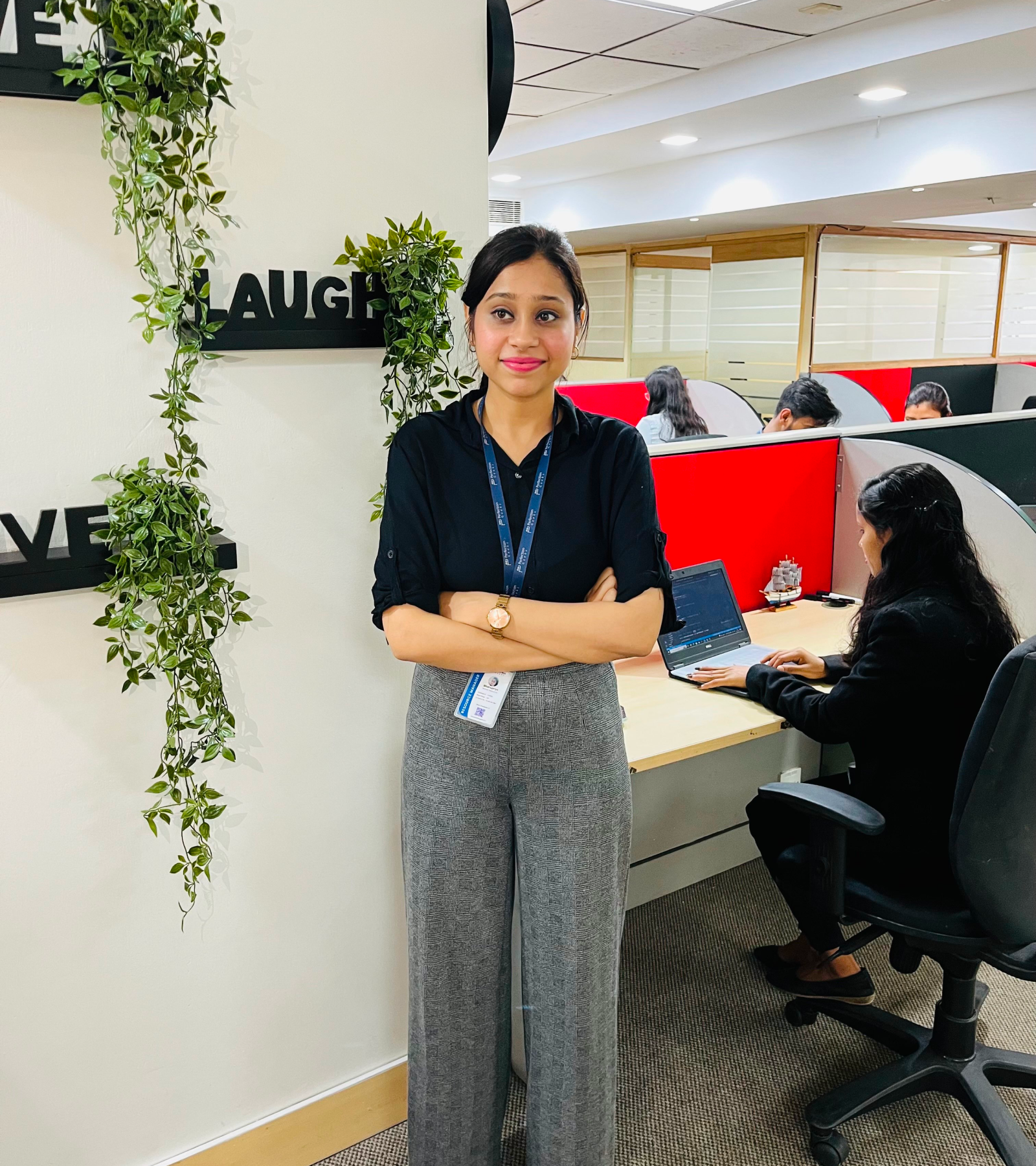How Much Does it Cost to Develop an E-commerce App like Mamaearth?

MAY, 24, 2024 14:35 PM
How Much Does it Cost to Develop an E-commerce App like Mamaearth?
In the bustling world of e-commerce, where competition is fierce and consumer expectations are constantly evolving, platforms like Mamaearth have risen to prominence by setting a benchmark for success. The seamless user experience, extensive product range, and efficient delivery system of Mamaearth have not only captured the hearts of consumers but also inspired many entrepreneurs to venture into the realm of e-commerce app development. However, before diving headfirst into this lucrative yet challenging industry, it's essential to address a burning question that plagues many aspiring app developers: How much does it truly cost to develop an e-commerce app like Mamaearth?
Understanding the Cost Components:
Platform Selection
Choosing the right platform is akin to laying the foundation for your e-commerce venture. It dictates the scalability, flexibility, and overall performance of your app. Let's delve deeper into each option:
Shopify
Renowned for its user-friendly interface and extensive range of customizable templates, Shopify is a top choice among e-commerce startups. Its pricing structure, ranging from $29 to $299 per month, caters to businesses of all sizes. The platform offers a host of built-in features, including inventory management, secure payment gateways, and marketing tools, making it an attractive option for entrepreneurs looking to launch their e-commerce store quickly and efficiently.
WooCommerce
As a WordPress plugin, WooCommerce provides unparalleled flexibility and scalability, allowing businesses to tailor their e-commerce store to their unique requirements. While the plugin itself is free, costs may arise from hosting, themes, and extensions. WooCommerce boasts a vibrant ecosystem of plugins and themes, enabling businesses to add features and functionalities as needed. This flexibility comes at the cost of potentially higher development expenses, as customization and integration with existing systems may require additional resources.
Custom Development
For businesses seeking complete control over their e-commerce platform, custom development offers unparalleled freedom and flexibility. However, this option comes with higher initial costs, as prices can vary significantly based on the complexity of the project and the rates of the development team. Custom development allows businesses to tailor every aspect of their e-commerce store to their specific needs, from design and user experience to backend functionality and integration with third-party services. While the upfront investment may be substantial, custom development offers long-term benefits in terms of scalability, performance, and competitive advantage.
Design and User Interface:
Mamaearth's success is inextricably linked to its intuitive and visually appealing interface, which sets the stage for a seamless and engaging user experience. Investing in UI/UX design is paramount for capturing and retaining customers in today's competitive e-commerce landscape. Let's explore the key considerations:
Wireframing and Prototyping:
.The initial stages of UI/UX design involve wireframing and prototyping, where designers create skeletal frameworks and interactive mockups to visualize the app's layout and functionality. This iterative process allows for feedback and refinement before proceeding to full-scale design.
Brand Consistency:
Maintaining brand consistency across all touchpoints is essential for fostering trust and recognition among customers. Design elements such as color schemes, typography, and imagery should align with the brand's identity and values.
Responsive Design:

With an increasing number of consumers accessing e-commerce sites via mobile devices, responsive design is non-negotiable. Designing for multiple screen sizes and resolutions ensures a seamless user experience across devices, thereby maximizing engagement and conversion rates.
Accessibility and Usability: Accessibility features, such as alternative text for images and keyboard navigation, ensure that the app is inclusive and usable for all users, including those with disabilities. Prioritizing accessibility not only enhances the user experience but also demonstrates a commitment to diversity and inclusion.
Iterative Design Process:
UI/UX design is an iterative process that involves continuous feedback and refinement based on user testing and analytics data. By gathering insights from real users, designers can identify pain points and opportunities for improvement, ultimately enhancing the app's usability and effectiveness.
Expertise and Collaboration: Hiring experienced UI/UX designers or partnering with a reputable design agency is essential for achieving the desired outcomes. Collaboration between designers, developers, and stakeholders ensures alignment with business objectives and user needs throughout the design process.
Cost Considerations
Costs for UI/UX design can vary depending on the scope and complexity of the project, as well as the expertise of the design team. While some businesses may opt for in-house design resources, others may choose to outsource to specialized agencies or freelancers. Regardless of the approach, investing in high-quality UI/UX design is a worthwhile investment that pays dividends in terms of customer satisfaction and loyalty.
Features and Functionality
To replicate Mamaearth's success, your e-commerce app must offer a range of features and functionalities that cater to the needs and preferences of modern consumers. Let's explore some key features and their associated costs:
Product Search: A robust search functionality with filters, sorting options, and autocomplete suggestions enhances the user experience and facilitates product discovery. Expect to allocate $3,000 to $10,000 for the development and implementation of this feature, depending on its complexity and integration with backend systems.
Reviews and Ratings: Enabling customers to leave reviews and ratings not only fosters trust and credibility but also provides valuable feedback for future purchases. Integration with review platforms or custom-built solutions may cost $2,000 to $8,000, depending on the chosen approach and the level of customization required.
Payment Gateways: Integrating multiple payment gateways like PayPal, Stripe, or Square offers flexibility and convenience for customers, allowing them to choose their preferred payment method at checkout. While some payment gateways may offer free integration, others may charge setup fees and transaction costs, which should be factored into the overall development budget.
Order Tracking and Push Notifications: Real-time order tracking and push notifications keep customers informed about the status of their purchases, from order confirmation to delivery. Development costs for these features can range from $5,000 to $15,000, depending on their complexity and integration with backend systems and third-party services.
Backend Development
The backend of an e-commerce app serves as the foundation for critical operations such as inventory management, order processing, and database management. Investing in a robust backend infrastructure is essential for ensuring the scalability, security, and performance of your app. Let's delve deeper into backend development considerations:
Scalability: As your e-commerce business grows, your backend infrastructure must be able to handle increasing traffic, transactions, and data volume without compromising performance. Scalability is achieved through efficient database design, caching mechanisms, and load balancing techniques that distribute traffic across multiple servers.
Security: Protecting sensitive customer data, such as personal information and payment details, is paramount in e-commerce app development. Implementing robust security measures, including data encryption, user authentication, and secure payment gateways, helps mitigate the risk of data breaches and cyberattacks.
Performance Optimization: Optimizing backend performance is crucial for delivering a seamless and responsive user experience. Techniques such as code optimization, database indexing, and server caching minimize latency and ensure fast response times, even during peak traffic periods.
API Development: Developing APIs (application programming interfaces) allows your e-commerce app to communicate with external systems, such as payment gateways, shipping providers, and analytics tools. Well-designed APIs facilitate seamless integration and data exchange between different components of your app and external services.
Content Management: An effective content management system (CMS) empowers administrators to manage product listings, inventory, promotions, and other dynamic content without requiring technical expertise. Customizing and integrating a CMS tailored to your e-commerce needs can streamline content management workflows and improve operational efficiency.
Database Management: Choosing the right database architecture and management system is crucial for storing, retrieving, and processing data efficiently. Factors such as data volume, transaction frequency, and scalability requirements influence the selection of databases, whether it's SQL (Structured Query Language) or NoSQL (Not Only SQL) databases.
Cost
Considerations**: Development costs for backend infrastructure can vary depending on factors such as database architecture, server infrastructure, and scalability requirements. Expect to invest $15,000 to $50,000 in backend development, with ongoing maintenance and hosting costs added.
Integration:
Integrating with third-party services, such as payment gateways, shipping providers, and analytics tools, enhances the functionality and effectiveness of your e-commerce app. However, integration comes with its own set of considerations and costs. Let's explore the key aspects of integration:
API Integration: Most third-party services offer APIs (application programming interfaces) that allow your e-commerce app to communicate with their platforms and exchange data. Integrating with these APIs enables features such as secure payment processing, real-time shipping quotes, and advanced analytics.
Custom Development: In some cases, custom integration may be required to bridge the gap between your e-commerce platform and third-party services that lack native APIs or require specialized functionality. Custom development entails additional costs but offers greater flexibility and customization options.
Data Mapping and Transformation: Integrating with third-party services often involves mapping and transforming data to ensure compatibility and consistency between different systems. This process may require custom scripting and data manipulation to align data formats, fields, and validation rules.
Testing and Validation: Rigorous testing and validation are essential to ensuring that integrated services function as intended and maintain data integrity. Testing involves scenarios such as successful transactions, error handling, edge cases, and scalability testing to identify and address any issues before deployment.
Cost Considerations: Integration fees can vary depending on the complexity and number of integrations required, as well as any licensing fees or usage-based pricing models imposed by third-party services. Expect to allocate $3,000 to $15,000 for integration costs, with ongoing maintenance and support additional.
Testing and Quality Assurance:
Rigorous testing and quality assurance are essential to delivering a reliable, secure, and user-friendly e-commerce app that meets the needs and expectations of your customers. Let's explore the key aspects of testing and quality assurance:
Functional Testing: Functional testing ensures that each feature and functionality of your e-commerce app behaves as expected and meets the specified requirements. This includes testing user interactions, data validation, error handling, and system integrations across different devices and platforms.
Performance Testing: Performance testing evaluates the speed, responsiveness, and scalability of your e-commerce app under various conditions, including different user loads, network conditions, and peak traffic periods. This ensures that your app can handle the expected volume of traffic and transactions without experiencing performance degradation or downtime.
Security Testing: Security testing identifies and mitigates potential vulnerabilities and threats that could compromise the confidentiality, integrity, and availability of sensitive customer data. This includes testing for common security risks such as SQL injection, cross-site scripting (XSS), and session management flaws.
Compatibility Testing: Compatibility testing verifies that your e-commerce app functions correctly across different devices, browsers, and operating systems. This ensures a consistent and seamless user experience for customers, regardless of their preferred device or platform.
Usability Testing: Usability testing involves gathering feedback from real users to evaluate the ease of use, intuitiveness, and satisfaction of your e-commerce app. This helps identify usability issues, pain points, and areas for improvement, allowing you to optimize the user experience and drive higher engagement and conversion rates.
Automation Testing: Automation testing utilizes tools and scripts to automate repetitive test cases and scenarios, thereby increasing efficiency, repeatability, and coverage. This includes regression testing, smoke testing, and API testing to validate the stability and reliability of your e-commerce app throughout the development lifecycle.
Cost Considerations: Testing costs typically range from 25% to 40% of the total development budget, amounting to $20,000 to $60,000 for a project of this scale. While investing in comprehensive testing may incur upfront expenses, it ultimately saves time and resources by identifying and resolving issues early in the development process, reducing the risk of costly rework and post-launch defects.
Maintenance and Support:
Post-launch, ongoing maintenance and support are crucial for ensuring the continued success and longevity of your e-commerce app. Let's explore the key aspects of maintenance and support:
Bug Fixes and Updates: As your e-commerce app evolves and grows, it's inevitable that bugs, errors, and issues will arise. Regular updates and patches are necessary to address these issues, improve performance, and introduce new features and functionalities based on user feedback and market trends.
Security Updates and Patches: Cybersecurity threats are constantly evolving, making it essential to stay vigilant and proactive in protecting your e-commerce app and customer data from potential breaches and vulnerabilities. Implementing security updates and patches in a timely manner helps mitigate the risk of security incidents and safeguard sensitive information.
Performance Monitoring and Optimization: Monitoring the performance of your e-commerce app in real-time allows you to identify and address performance bottlenecks, latency issues, and scalability concerns before they impact the user experience and business operations. This includes optimizing server configurations, database queries, and caching mechanisms to ensure optimal performance under varying conditions.
Customer Support and Feedback: Providing responsive and effective customer support is essential for building trust, loyalty, and satisfaction among your customers. Addressing inquiries, resolving issues, and soliciting feedback through various channels, such as email, live chat, and social media, demonstrates your commitment to customer-centricity and continuous improvement.
Regulatory Compliance: Staying compliant with industry regulations, data protection laws, and privacy standards is essential for safeguarding your e-commerce app and customer data from legal and regulatory risks. This includes adhering to standards such as PCI DSS (Payment Card Industry Data Security Standard) for secure payment processing and GDPR (General Data Protection Regulation) for data privacy and protection.
Cost Considerations: Maintenance costs typically range from 10% to 20% of the initial development cost per year, amounting to $10,000 to $30,000 annually. While investing in ongoing maintenance and support may seem like an additional expense, it's essential for ensuring the reliability, security, and performance of your e-commerce app over time, thereby protecting your investment and maximizing its long-term value.
By meticulously analyzing each cost component and considering the associated benefits and trade-offs, entrepreneurs can make informed decisions about the budget allocation for developing an e-commerce app like Mamaearth. While the initial investment may seem daunting, the potential returns in terms of customer acquisition, retention, and revenue generation justify the expenditure and position your business for long-term success in the competitive e-commerce landscape.
Cost Estimation:
Now, let's delve into the nitty-gritty details of cost estimation for developing an e-commerce app like Mamaearth:
Basic App:
A basic e-commerce app typically includes essential features such as product listings, shopping carts, checkout, user accounts, and basic search functionality.
Here's a breakdown of potential costs:
Platform Subscription: $29 to $299 per month (for platforms like Shopify)
UI/UX Design: $5,000 to $10,000
Backend Development: $10,000 to $20,000
Integration: $3,000 to $5,000
Testing and Quality Assurance: $2,500 to $5,000
Maintenance and Support (first year): $1,000 to $5,000
Total Estimated Cost: $10,000 to $50,000
Mid-range App:
A mid-range e-commerce app includes advanced features to enhance the user experience and engagement. This may include personalized recommendations based on user behavior, social media integration for seamless sharing and engagement, and multi-language support to cater to a global audience.
Here's a breakdown of potential costs:
Platform Subscription: $29 to $299 per month
UI/UX Design: $10,000 to $20,000
Advanced Features Development (personalized recommendations, social media integration, multi-language support): $20,000 to $40,000
Backend Development (to support advanced features): $20,000 to $30,000
Integration (with advanced APIs for recommendations, social media platforms, and language translation services): $5,000 to $10,000
Testing and Quality Assurance (to ensure seamless integration of advanced features): $5,000 to $10,000
Maintenance and Support (first year): $2,000 to $10,000
Total Estimated Cost: $50,000 to $100,000
High-end App:
A high-end e-commerce app offers a premium experience with custom design, AI-powered features, and cutting-edge technologies like AR and VR integration.
Here's a breakdown of potential costs:
Platform Subscription: $29 to $299 per month
Custom UI/UX Design: $20,000 to $50,000
Advanced Features Development (AI-powered product recommendations, AR/VR integration): $50,000 to $100,000
Scalable Infrastructure Development (to support high traffic and complex features): $30,000 to $50,000
Integration (with advanced AI APIs and AR/VR platforms): $10,000 to $20,000
Rigorous Testing and Quality Assurance (to ensure flawless performance of advanced features): $10,000 to $20,000
Maintenance and Support (firstyear): $5,000 to $20,000
Total Estimated Cost: Exceeds $100,000
By meticulously analyzing each cost component, entrepreneurs can accurately estimate the budget required to develop an e-commerce app like Mamaearth and make informed decisions throughout the development process.
Conclusion
Developing an e-commerce app like Mamaearth requires not only a clear vision and strategic planning but also a significant investment of time, resources, and capital. By understanding the intricacies of cost components and making informed decisions at each stage of development, entrepreneurs can embark on their journey to create a successful e-commerce platform that rivals the likes of Mamaearth. However, it's crucial to remember that the true measure of success lies not only in the features and functionalities of the app but also in its ability to deliver value to customers and foster long-term relationships with them.








